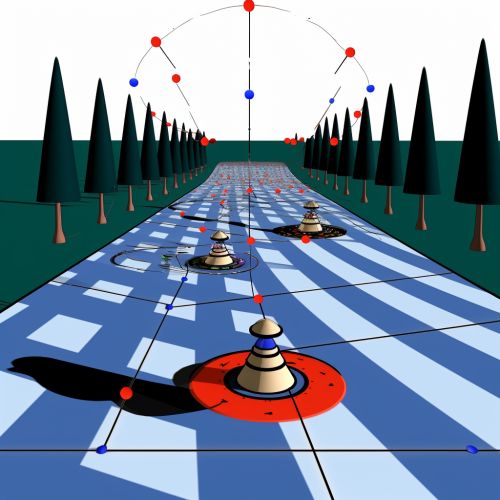Forward error correction
Introduction
Forward error correction (FEC) is a technique used in information theory to control errors in data transmission over unreliable or noisy communication channels. The central idea is that the sender encodes the message in a redundant way by using an error-correcting code (ECC).


Overview
The redundancy allows the receiver to detect a limited number of errors that may occur anywhere in the message, and often to correct these errors without retransmission. FEC gives the receiver the ability to correct errors without needing a reverse channel to request retransmission of data, but at the cost of a fixed, higher forward channel bandwidth. FEC is therefore applied in situations where retransmissions are costly or impossible, such as one-way communication links and when transmitting to multiple receivers in multicast^[1^].
Types of FEC
There are two basic types of FEC: Block codes and Convolutional codes.
Block codes
Block codes work on fixed-size blocks (packets) of bits or symbols of predetermined size. Common examples of block codes are Reed-Solomon, BCH, Multidimensional parity-check codes, and single-parity-check codes. Block codes are processed on a block-by-block basis.


Convolutional codes
Convolutional codes work on bit or symbol streams of arbitrary length. They are often used in combination with block codes to form a hybrid coding scheme. Examples include the Viterbi, Turbo, and LDPC (Low-Density Parity-Check) codes. Convolutional codes are processed on a bit-by-bit basis.


Applications of FEC
FEC is used in various communication systems such as satellite and deep-space communications, wireless communication, and broadcasting. It is also used in storage media such as flash memory and hard disk drives.
Satellite and deep-space communications
In satellite and deep-space communication, FEC is used to overcome the effects of noise, interference and fading caused by the long-distance transmission^[2^].
Wireless communication
In wireless communication, FEC is used to correct errors caused by multipath fading and signal degradation. It is a key component in technologies such as Wi-Fi, 3G, and 4G.
Broadcasting
In digital broadcasting, FEC is used to ensure the quality of the received signal. It is used in both audio and video broadcasting, including DVB (Digital Video Broadcasting) and ATSC (Advanced Television Systems Committee) standards.
Storage media
In storage media, FEC is used to correct errors caused by physical imperfections in the storage medium. It is used in hard disk drives, flash memory, and optical discs.


Performance of FEC
The performance of FEC is evaluated based on its ability to correct errors and its impact on data rate. The error correction capability of an FEC scheme is directly related to the amount of redundancy added to the data. More redundancy allows for more error correction, but at the cost of a lower data rate.
The performance of FEC also depends on the quality of the channel and the type of errors it introduces. FEC is particularly effective against burst errors, where a sequence of bits is corrupted, and random errors, where individual bits are corrupted.
Limitations of FEC
While FEC is a powerful tool for improving the reliability of data transmission, it has its limitations. These include:
- Increased bandwidth: FEC requires additional bandwidth to transmit the redundant data. This can be a significant drawback in bandwidth-limited systems.
- Increased complexity: FEC requires complex encoding and decoding algorithms, which can increase the cost and power consumption of the system.
- Delay: FEC can introduce delay in the transmission, as the receiver must wait for the entire block of data before it can correct any errors.
- Inability to correct large numbers of errors: While FEC can correct a certain number of errors, if the number of errors exceeds this limit, the data cannot be recovered.


Conclusion
In conclusion, FEC is a critical technique in modern communication systems, providing a means to maintain data integrity over unreliable or noisy channels. Despite its limitations, its ability to correct errors without the need for retransmission makes it an invaluable tool in many applications, from satellite communication to digital broadcasting and storage media.
See Also
- Error detection and correction - Reed-Solomon - BCH code - Viterbi algorithm - Turbo code - Low-Density Parity-Check Code - Digital Video Broadcasting - Advanced Television Systems Committee
References
1. "Forward Error Correction (FEC) in Data Networks". Cisco Systems. Retrieved 2020-11-20. 2. "Error Control Coding in Satellite and Space Communications". NASA. Retrieved 2020-11-20.
